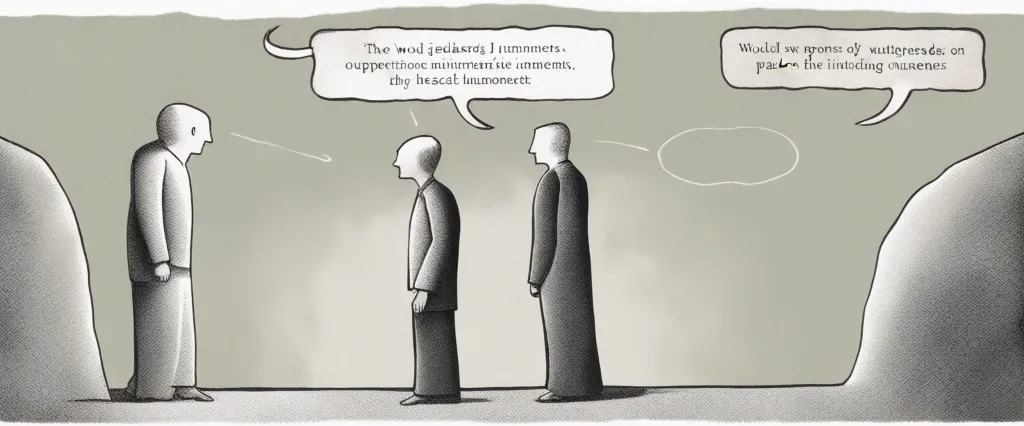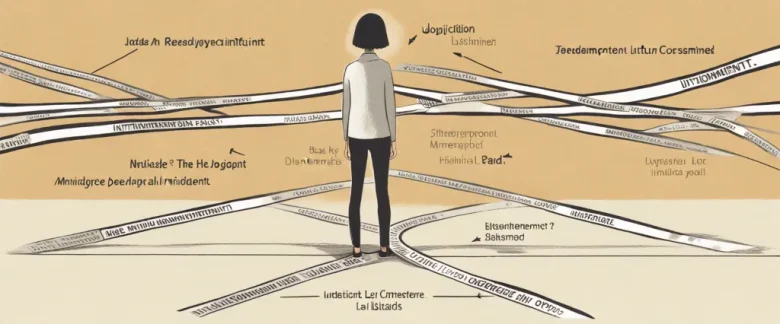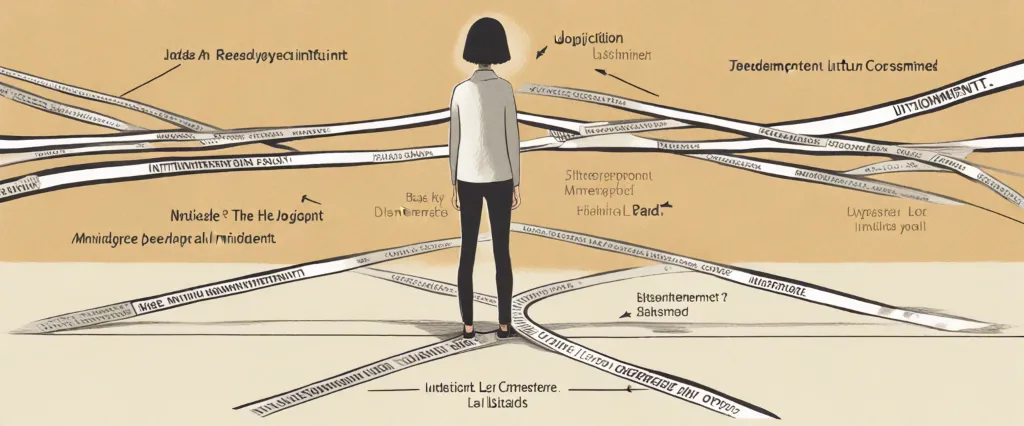In “Biased” by Jennifer L. Eberhardt, readers are presented with a compelling exploration of implicit bias and its profound impact on society. Through extensive research and personal experiences, Eberhardt, a celebrated social psychologist and MacArthur “Genius” Grant recipient, exposes the hidden biases that shape our thoughts, actions, and interactions. With great expertise in understanding the complexities of bias, Eberhardt provides invaluable insights into the ways in which prejudice manifests itself, and offers strategies for individuals and institutions to combat and overcome these biases. Her seminal work is an essential read for those seeking to understand the profound influence of bias on our daily lives and the urgent need for change.
Chapter 1: Unconscious Bias: The Hidden Influences on Our Perception
In Chapter 1 of “Biased” by Jennifer L. Eberhardt, the author explores the concept of unconscious bias and how it influences our perception. Eberhardt begins by presenting an example of her own unconscious bias when she mistook a black colleague for a janitor, highlighting how even well-intentioned individuals can hold biases without realizing it.
She goes on to explain that unconscious biases are deeply ingrained and shaped by our upbringing, experiences, culture, and society. These biases affect how we process information, make decisions, and perceive others. Eberhardt suggests that these biases are a natural part of being human, as our minds constantly categorize and make quick judgments based on limited information.
One of the most pervasive biases, according to Eberhardt, is race-based bias. She discusses various studies and experiments that demonstrate the unconscious racial bias present in our society, such as how people of color are more likely to be perceived as threatening or criminal. Eberhardt emphasizes that even people who sincerely believe in equality can still hold racial biases due to the deep-rooted nature of these prejudices.
Furthermore, Eberhardt introduces the concept of “shooter bias” to illustrate how unconscious biases can have life or death consequences. She explains that individuals, regardless of their own racial background, tend to perceive black individuals as more threatening and are more likely to mistakenly identify objects held by black individuals as weapons. This bias contributes to the alarming rates of police shootings involving unarmed black individuals.
In this chapter, Eberhardt sets the stage for her exploration of unconscious bias throughout the book. She conveys the notion that by becoming aware of our biases and their consequences, we can work towards eliminating them and creating a more just and equitable society.
Chapter 2: The Science of Bias: Understanding How Our Minds Work
Chapter 2 of “Biased” by Jennifer L. Eberhardt delves into the science of bias and the underlying mechanisms within our minds that contribute to biased thinking. Eberhardt, a social psychologist, aims to dissect how bias shapes our perceptions, decisions, and actions, ultimately shining a light on the need for awareness and change.
The chapter begins by exploring implicit bias and its prevalence in society. Implicit biases are automatic associations that develop over time due to cultural influences and personal experiences. These biases operate silently within our minds, even when we consciously strive to be fair and unbiased. Eberhardt highlights research studies that reveal how implicit bias can influence our judgments, behavior, and interactions with others.
She introduces the concept of cognitive shortcuts, or heuristics, that our brains employ to navigate the overwhelming amount of information we encounter daily. However, these shortcuts can inadvertently reinforce bias, leading us to make snap judgments based on stereotypes rather than a careful evaluation of the individual.
Eberhardt also delves into the role of empathy and how biased perceptions can hinder our ability to empathize with others outside our immediate social group. Our brains tend to categorize individuals based on race, which can result in reduced empathy towards those we perceive as different from ourselves, hindering opportunities for understanding and connection.
The chapter concludes by emphasizing the importance of unpacking bias and challenging our own assumptions. Understanding the science of bias helps us recognize the unconscious biases we harbor, allowing us to work towards mitigating their negative impact. By leveraging this awareness, we can make more conscious and fair decisions, fostering a more equitable society for all.
Chapter 3: Bias in Policing and Criminal Justice System
Chapter 3 of “Biased” by Jennifer L. Eberhardt explores the issue of bias in policing and the criminal justice system. Eberhardt delves into the ways in which racial biases can affect decision-making processes and outcomes, ultimately leading to disparities in policing practices and the administration of justice.
The chapter begins by highlighting the prevalence of biased practices such as racial profiling, which involves targeting individuals based on their perceived race rather than evidence of criminal behavior. Police officers are often influenced by stereotypical associations that link certain individuals or communities with criminality. Eberhardt presents compelling research that demonstrates how implicit biases affect police officers’ decision to stop, search, and use force against individuals from certain racial or ethnic backgrounds.
Eberhardt further examines the role of bias within the criminal justice system, particularly in regard to sentencing. She discusses studies that show how racial stereotypes and stereotypes about criminality affect the severity of penalties assigned to offenders. Additionally, she examines how biases can inform prosecutorial decisions, influencing the likelihood of charges being filed for certain offenses or leading to plea bargains that disproportionately affect minority defendants.
The chapter concludes by highlighting the long-term consequences of biased practices in policing and the criminal justice system. Eberhardt argues that these biases perpetuate a cycle of mistrust, as individuals from marginalized communities come to expect unfair treatment, leading to strained relationships between law enforcement and the communities they serve. The chapter calls for systemic reforms, including training officers to recognize and mitigate their biases, implementing unbiased decision-making protocols, and reevaluating sentencing procedures, to ensure fairness and equity within the criminal justice system. Overall, Eberhardt urges readers to recognize and address the pervasive biases that exist within these institutions in order to promote justice and equality for all.
Chapter 4: Bias in Education: Examining the Classroom Dynamics

In Chapter 4 of “Biased: Uncovering the Hidden Prejudice That Shapes What We See, Think, and Do” by Jennifer L. Eberhardt, the focus is on biases that exist within the education system and the dynamics within classrooms that perpetuate inequality.
The chapter starts with Eberhardt recounting the story of Charles, a student who faced racial discrimination from his teacher. This story serves as a jumping-off point to explore the wider issue of bias in education. Eberhardt highlights that such biases are not always explicit or intentional but can be fueled by implicit biases influenced by stereotypes and social conditioning.
Eberhardt emphasizes the importance of recognizing and acknowledging these biases to address systemic inequalities. She explains that educational disparities often stem from unequal access to quality resources, biased disciplinary actions, and prejudiced expectations from teachers. These biases can have long-lasting effects on students’ self-esteem, motivation, and academic achievements.
One crucial aspect discussed in the chapter is the discrepancy in school discipline practices, particularly regarding the treatment of African American students. Eberhardt presents statistical evidence showing that black students are more likely to be suspended or expelled compared to their white counterparts, even for similar infractions. This biased disciplinary approach creates a harmful cycle where students are disenfranchised and view school as an unwelcoming environment, leading to further disengagement and academic struggles.
Eberhardt concludes the chapter by stressing the importance of addressing biases in education and implementing evidence-based strategies to promote equity. She urges educators to adopt a mindset of “identity-safe” classrooms, where students are seen, validated, and encouraged irrespective of their race, gender, or socio-economic background. Additionally, she suggests using data-driven policies that track discipline outcomes, diversifying the curriculum, and providing cultural competency training for teachers to minimize bias in the classroom.
Overall, Chapter 4 of “Biased” presents a thought-provoking exploration of the biases embedded within the educational system and the need for concerted efforts to create inclusive and equitable learning environments.
Chapter 5: Bias in Healthcare: Disparities and Challenges
Chapter 5 of the book “Biased” by Jennifer L. Eberhardt explores the concept of bias in healthcare, specifically focusing on disparities and challenges. Eberhardt sheds light on the implicit biases that exist within medical practice and how they contribute to unequal treatment and health outcomes among different racial and ethnic groups.
The chapter begins by discussing the historical context of bias in healthcare, highlighting the legacy of racism and discrimination that continues to impact the quality of care provided to marginalized communities. Eberhardt examines how biased beliefs, stereotypes, and cultural misunderstandings can influence diagnoses, treatment decisions, and even the access to healthcare services.
Eberhardt goes on to discuss the impact of bias on various aspects of healthcare, including pain management, mental health treatment, and maternal health. She presents research evidence and real-life case studies to demonstrate how bias can lead to under-diagnosis, inadequate pain relief, and overall poorer health outcomes for minorities.
Furthermore, the chapter explores the challenges faced in addressing and rectifying healthcare disparities. Eberhardt addresses the need for healthcare professionals to acknowledge and confront their biases, highlighting the importance of ongoing education and training to promote fair and unbiased medical care. She also emphasizes the significance of diversifying the healthcare workforce to ensure equal representation and understanding of different patient populations.
The chapter concludes with a call to action, urging individuals and institutions to commit to challenging and eliminating biases in healthcare. Eberhardt emphasizes the power of awareness, empathy, and institutional change in promoting equitable medical care for all.
Overall, Chapter 5 of “Biased” provides a comprehensive examination of bias in healthcare, its impact on disparities, and the challenges in achieving equality in the medical field.
Chapter 6: Bias in Hiring and Workplace: Breaking Down Barriers
Chapter 6 of “Biased” by Jennifer L. Eberhardt explores bias in hiring practices and the workplace, shedding light on the barriers that perpetuate discrimination and inequality. The chapter dives deep into understanding the impact of bias on individuals’ opportunities, as well as strategies to overcome these biases.
Eberhardt begins by highlighting the disparity faced by marginalized groups when seeking employment. She elucidates how race, gender, and other identity markers can trigger unconscious biases in hiring managers, leading to unfair treatment and limited access to opportunities. The author emphasizes the importance of dismantling such biases in order to create a more equitable workplace and society.
The chapter then delves into various studies that reveal the extent of bias in hiring practices. For instance, Eberhardt discusses research findings that demonstrate how identical resumes with white-sounding names are more likely to receive callbacks compared to resumes with names associated with racial minorities. These studies underscore the need for systemic changes in hiring procedures to counteract biased decision-making.
Eberhardt also explores the concept of “audit studies” where researchers send fictitious job applications, varying only the names, to employers to measure their bias. These studies provide concrete evidence to support claims of workplace discrimination and its impact on underrepresented individuals.
To combat bias in hiring and workplace practices, Eberhardt suggests implementing blind auditions, using diverse hiring panels, and embracing diversity and inclusion training. Furthermore, she emphasizes the importance of individuals acknowledging and actively challenging their own biases.
In conclusion, Chapter 6 of “Biased” highlights the pervasive biases that exist within hiring and workplace practices. Eberhardt urges readers to recognize these biases and work collectively to dismantle them, promoting fairness and equality for all individuals, irrespective of their background or identity.
Chapter 7: Bias in Media and Entertainment: Shaping Our Perception
Chapter 7 of “Biased” by Jennifer L. Eberhardt explores the concept of bias in media and entertainment, showing how these platforms shape our perception of various social groups. Eberhardt highlights the influence that media and entertainment have on our biases, emphasizing the power they hold in perpetuating stereotypes and reinforcing social inequalities.
The chapter begins by discussing the stereotypes portrayed in films and television shows, where certain racial and ethnic groups are often typecast into specific roles that reinforce existing biases. Eberhardt points out that this kind of representation not only reflects but also shapes societal attitudes towards different groups, leading to a cycle of biased perceptions.
She then delves deeper into the research on media bias, focusing on studies that demonstrate how news coverage of crime and violence unfairly targets and stigmatizes minority communities. Eberhardt explains how racial and ethnic associations in media can create a distorted perception of reality, leading to negative biases and discrimination against marginalized groups.
The chapter also explores the concept of implicit bias, showing how media exposure can influence our unconscious biases. Eberhardt argues that even individuals who consciously reject biased views can still hold implicit biases as a result of media exposure.
Furthermore, Eberhardt highlights the role of social media in perpetuating bias. She discusses the algorithms used by platforms like Facebook and Twitter, which often reinforce users’ existing beliefs and preferences, thereby creating echo chambers and further amplifying biases.
Overall, Chapter 7 serves as a sharp reminder of the power of media and entertainment in shaping our perceptions. It emphasizes the importance of critically engaging with media, recognizing bias, and actively seeking diverse perspectives in order to counter the harmful effects of biased media portrayals on our perception of various social groups.

Chapter 8: Overcoming Bias: Strategies for a Fairer Society
Chapter 8 of the book “Biased” by Jennifer L. Eberhardt provides strategies to overcome biases and build a fairer society. Eberhardt discusses various interventions at both individual and institutional levels, aiming to reduce biases and promote equality.
Firstly, the chapter emphasizes the need for awareness and acknowledgment of bias. Eberhardt encourages individuals to confront their own biases through introspection and self-reflection. Understanding one’s biases is crucial for effective change.
Secondly, Eberhardt suggests implementing intervention strategies to reduce bias and promote fairness. These strategies include perspective-taking, stereotype replacement, and counter-stereotypic imaging. Perspective-taking involves imagining oneself in another person’s situation, facilitating empathy and reducing prejudice. Stereotype replacement encourages individuals to challenge and replace stereotypic thoughts with more accurate and fair ones. Counter-stereotypic imaging involves exposing oneself to positive and diverse examples that challenge stereotypes.
Additionally, Eberhardt stresses the importance of building diverse social networks. Encouraging interactions among people from different backgrounds helps break down stereotypes and fosters understanding. Eberhardt also highlights the significance of equitable policies and practices in institutions. Implementing unbiased hiring processes, providing equal opportunities, and ensuring representation can help create a fairer society.
Lastly, the chapter discusses the role of education in combating bias. Educating children and young adults about biases, stereotypes, and inequality aids in promoting fairness and understanding.
Overall, Chapter 8 of “Biased” provides a roadmap for overcoming biases and establishing a more equitable society. Through self-awareness, intervention strategies, building diverse networks, institutional changes, and education, individuals can contribute to reducing biases and creating a fairer world.
After Reading
In conclusion, Jennifer L. Eberhardt’s book “Biased” sheds light on the deeply ingrained biases that we hold as individuals and as a society. Through her research and personal experiences, Eberhardt reveals how bias operates in various aspects of life, from policing to education to employment, and how it impacts marginalized communities disproportionately. This eye-opening examination prompts readers to confront their own biases, encouraging introspection and a deeper understanding of the detrimental effects of bias on both individuals and society as a whole. Eberhardt offers strategies to counteract bias, emphasizing the importance of empathy, perspective-taking, and diversity in creating a more equitable and just society. “Biased” serves as a call to action, challenging readers to challenge their own biases and work towards creating a more inclusive and unbiased world.
1. “Just Mercy: A Story of Justice and Redemption” by Bryan Stevenson – This powerful memoir explores the ingrained biases within the criminal justice system, focusing on racial inequality and advocating for social justice and mercy.
2. “The New Jim Crow: Mass Incarceration in the Age of Colorblindness” by Michelle Alexander – In this thought-provoking book, Alexander examines the deeply entrenched racial biases within the American criminal justice system, highlighting the disproportionate impact on communities of color.
3. “Stamped from the Beginning: The Definitive History of Racist Ideas in America” by Ibram X. Kendi – Kendi meticulously traces the history of racist ideas, debunking common myths and challenging readers to confront their own biases while offering a roadmap for building an antiracist society.
4. White Fragility: Why It’s So Hard for White People to Talk About Racism” by Robin DiAngelo – DiAngelo explores the concept of white fragility and the resistance certain individuals have when discussing or addressing issues of race, providing insights into how such fragility perpetuates systemic biases.
5. “Between the World and Me” by Ta-Nehisi Coates – Written as a letter to the author’s son, Coates delves into his personal experiences and reflections on race, weaving together history, socio-political analysis, and personal anecdotes to explore the ongoing struggle for racial justice in America.




